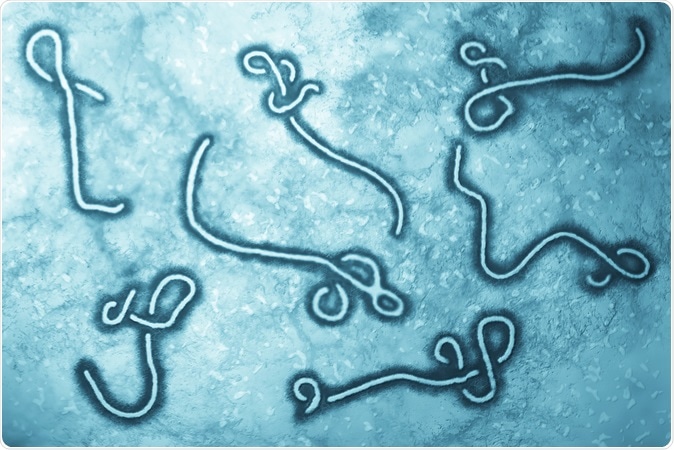Liberia’s Ebola outbreak has yielded a successful trial of two vaccines against the deadly infection that could provide protection for up to a year and is also deemed to be safe.

Microscopic view of Ebola Virus. Image Credit: Nixx Photography / Shutterstock
The results come from US-Liberian clinical research partnership. It was in October 2014 that Liberia, which was hard hit with Ebola outbreaks, had asked US health officials for research support to help fight the outbreak. This was the beginning of Partnership for Research on Ebola Virus in Liberia (PREVAIL) that finally led to this vaccine. The results of the study are published in the latest issue of the New England Journal of Medicine this week.
The latest trial of these vaccines started off in February 2015. They had planned a phase 3 trial which means, they had planned initially to recruit many people (around 28,000 volunteers) for this study. As the disease activity sharply declined, they had to step down to a phase 2 study with a smaller number of participants (around 1,500).
The team of researchers compared the two vaccine candidates with saline placebo injection. The vaccines tried were;
- An adenovirus-based vaccine (ChAd3) developed by the National Institute of Allergy and Infectious Diseases (NIAID) and GlaxoSmithKline
- A recombinant vesicular stomatitis virus-based vaccine (VSV-EBOV) developed by researchers in Canada and now licensed by Merck
VSV-EBOV has been already tried in Guinea in the spring and summer of 2015 and showed efficacy in protecting people who received it soon after exposure to Ebola. It helped curb the Ebola flare ups in different parts of West Africa.
This latest trial was sponsored by NIAID, part of the National Institutes of Health (NIH). Around 1500 people were included in the study. These adults had never been previously exposed to Ebola. They received either of the two vaccines or the saline injection. Their blood samples were then gathered and tested at four points after the injection – 1 week, 1 month, 6 months and 1 year. At the one year testing, the blood showed a modest antibody response to the virus causing Ebola. The titres or levels of antibodies that provide the specific protection against an infection by the end of a month after the injection was seen to be four times greater than before they received the injection in 71 percent of those who received ChAd3 and 84 percent of those who received VSV-EBOV. These levels were seen in only 3 percent of those who received saline shots. At end of one year the antibody response was maintained for 64 percent, 80 percent and 7 percent in the ChAd3, VSV-EBOV and saline placebo groups respectively.
Side effects of the vaccines include headache, muscle aches, fever and tiredness. These side effects were seen in earlier trials as well for both of these vaccines and no major new safety red flags were seen. Some other findings from this study include the fact that those who received this vaccine also seemed to have a lower rate of getting malaria especially those who received the VSV-EBOV shots. This might be due to some “cross immunity” which needs to be explored in further research said the team. In addition, around 4 percent of the population already had some immunity against Ebola virus before they received the shots found researchers.
Further studies about the effectiveness of these vaccines in children is necessary wrote the team since around 16 percent of the infected persons are children.
Reference: